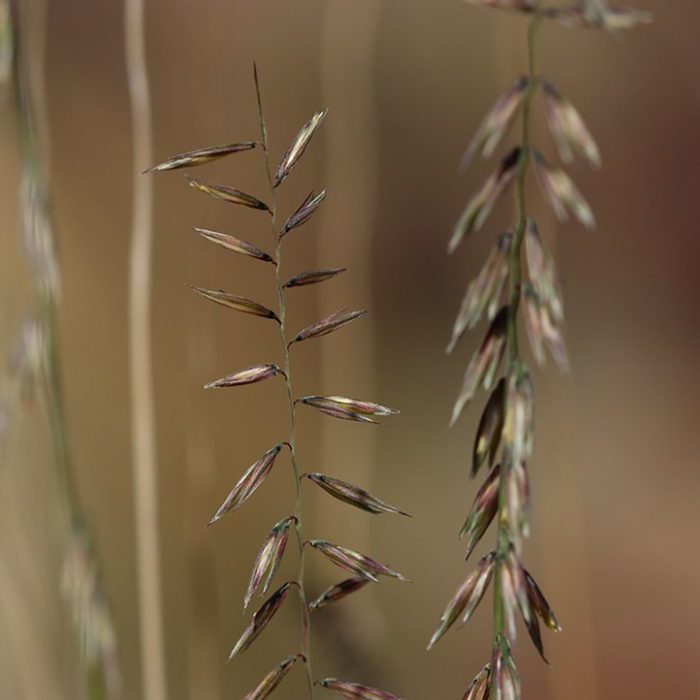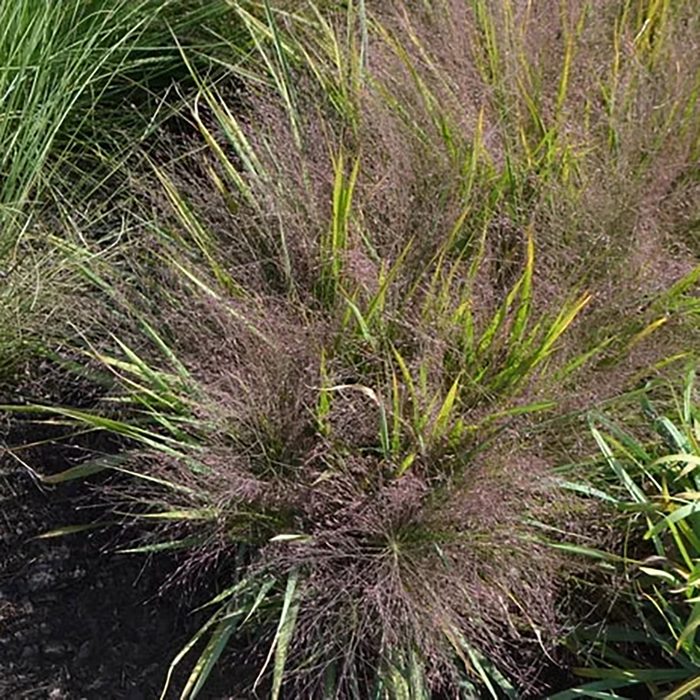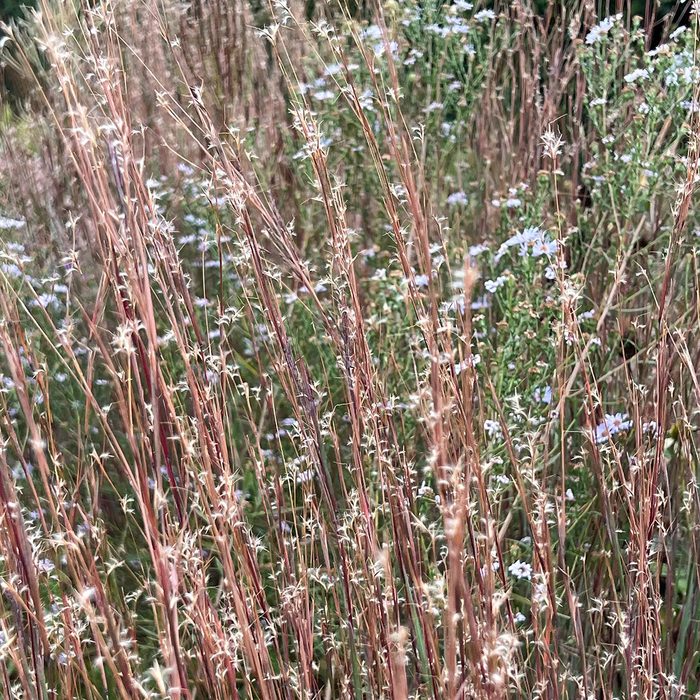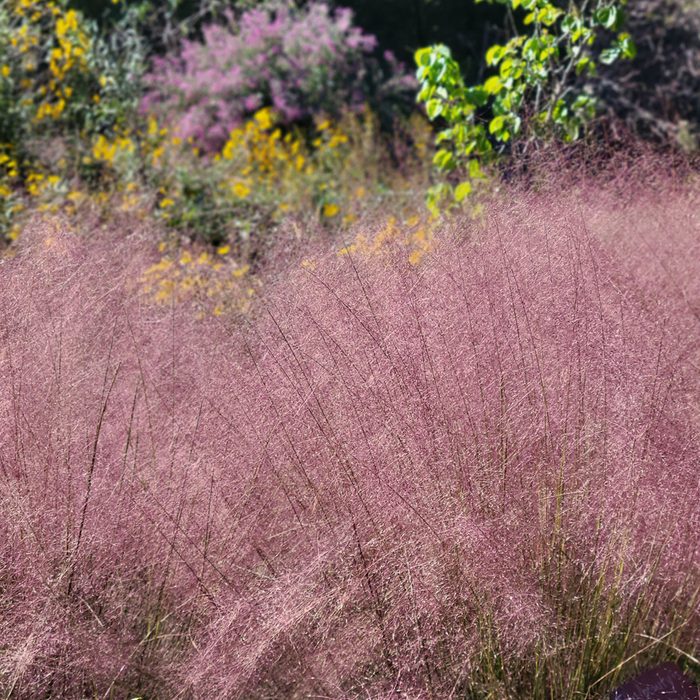Native grasses are easy to maintain and wildlife friendly. Here are some that will add lively accents to your yard, or even replace your turfgrass.
7 Native Grasses To Plant in Your Yard

Side Oats Grama (Bouteloua curtipendula)
A resilient warm-season perennial, side oats grama is good for lawns and large spaces. It mixes well with flowering perennials and gets its name from its flowering spikelets and seed heads, which resemble oats.
Its benefits and specs include:
- Good replacement for turfgrass, and for erosion control;
- One of the most important range grasses, according to the U.S. Department of Agriculture (USDA);
- Provides seeds for birds, larval host for skipper butterflies;
- Attracts caterpillars, birds and fireflies;
- Moisture needs: Medium to dry/drought tolerant;
- Size: 1-1/2- to 3-ft. high, with a 1-1/2- to 2-ft. spread;
- Blooms July through August;
- Grow in full sun to part shade, in clay, sand or rocky soil;
- Native to much of North America;
- Hardy in USDA Plant Hardiness Zones 3 to 9.

Purple Lovegrass (Eragrostis spectabilis)
This low-growing warm-season bunchgrass is great for a natural meadow-like setting, or in groupings to form a border. It adds comforting hues of reddish-purple inflorescence (aka flower heads) in the late summer and early fall.
- Good for ornamental borders and meadows;
- Dense root system good for erosion control;
- Attracts caterpillars, native bees and birds;
- Larval host for skipper butterflies;
- Requires medium to dry moisture;
- One to two feet high with a one to two-foot spread;
- Blooms July to October;
- Grows in full sun and dry, sandy or gravelly soil (tolerant of poor soils);
- Native to much of North America;
- USDA Zones 5 to 9.

Path Rush (Juncus tenuis)
This clump-forming perennial is hearty enough to tolerate moderate foot traffic, making it a versatile addition to landscaping. It also forms small greenish and brownish flowers in spikes or heads, which attract birds.
- Good for a lawn alternative, or in pathways and rain gardens;
- Provides ample food and shelter for wildlife;
- Attracts birds;
- Requires at least medium moisture;
- One to two feet high with a 1- to 1-1/2-ft. spread;
- Blooms March to June;
- Grows full sun or part shade in clay, loam, sand and well-drained soil;
- Native to much of North America;
- Zones 3 to 9.

Little Bluestem (Schizachyrium scoparium)
Flowing and wispy, little bluestem forms dense mounds. It’s blue-green color and fine texture makes it an ideal ornamental grass, with aesthetics enhanced in the fall as foliage turns a deep reddish brown.
Small birds particularly benefit through the winter from its white, reflective seed tufts.
- Good for borders and rain gardens, or in a prairie-like setting;
- Tolerates high heat and humidity;
- Provides great shelter for birds and other wildlife;
- Attracts caterpillars, native bees, birds and fireflies;
- Larval host for skipper butterflies;
- Requires medium to dry moisture;
- One-and-one-half to four feet high, with a 1-1/2- to 2-ft. spread;
- Blooms June to December;
- Grows in full sun and loam, clay, sand or limestone soil;
- Native to much of North America;
- Zones 3 to 9.

Muhly (Muhlenbergia reverchonii)
Poofy with reddish-pink inflorescences (flower heads), muhly (aka undaunted ruby muhly) is often described as ethereal, thanks to the way its see-through spikes float gracefully above its green foliage clumps.
“This grass may look delicate, but once established it can survive our often cold and harsh conditions of the Intermountain West,” says Carvahlo.
- Good for ornamental displays, accents and texture, especially when planted en masse;
- Attracts songbirds, turkeys, small animals and pollinator insects;
- Grows in dry or moist conditions;
- Two- to two-and-a-half feet high with a 1-1/2-to 2-ft. spread;
- Blooms September to October;
- Grows in full sun and rocky, gravelly, loamy, clay or limestone soil;
- Native to Texas and Oklahoma;
- Zones 5 to 10.

Idaho Fescue (Festuca idahoensis)
Idaho fescue, aka siskiyou blue, is a perky, compact clump grass with a soft, graceful look. Its tan flower spikes shoot up in the spring.
“I love using this grass in large containers mixed with gauras, salvias and cascading delospermas,” says Carvahlo. “It also maintains its tidy shape and color throughout every season.”
- Good for bordering paths and walkways;
- Attracts butterflies;
- Important food source for elk and pronghorn in wild areas;
- Drought tolerant;
- One to two feet tall with a one-foot spread;
- Blooms April to June;
- Grows in full sun (benefits from light afternoon shade) and well-drained soil;
- Native to Western U.S. and grows well in Southwest heat;
- Zones 4 to 8.
Note: As a cool-season grass, it actively grows in the spring and fall. It still needs water in the summer, but no fertilizer.

Giant Sacaton (Sporobolus wrightii)
Few grasses make a grand impression better than giant sacaton, aka windbreaker. With flowers growing up to 10 feet tall in the summer, farmers sometimes use it as a natural windbreak.
“It can also create privacy or make a striking statement when planted alone,” says Carvahlo.
- Good for large borders and property boundaries, aesthetic appeal;
- Attracts birds;
- Heat tolerant;
- Grows 10 feet tall (in bloom) with a six-foot spread;
- Blooms September to October;
- Needs full sun and clay, loam or sandy soil;
- Native to Southwestern U.S.;
- Zones 5 to 8.




















